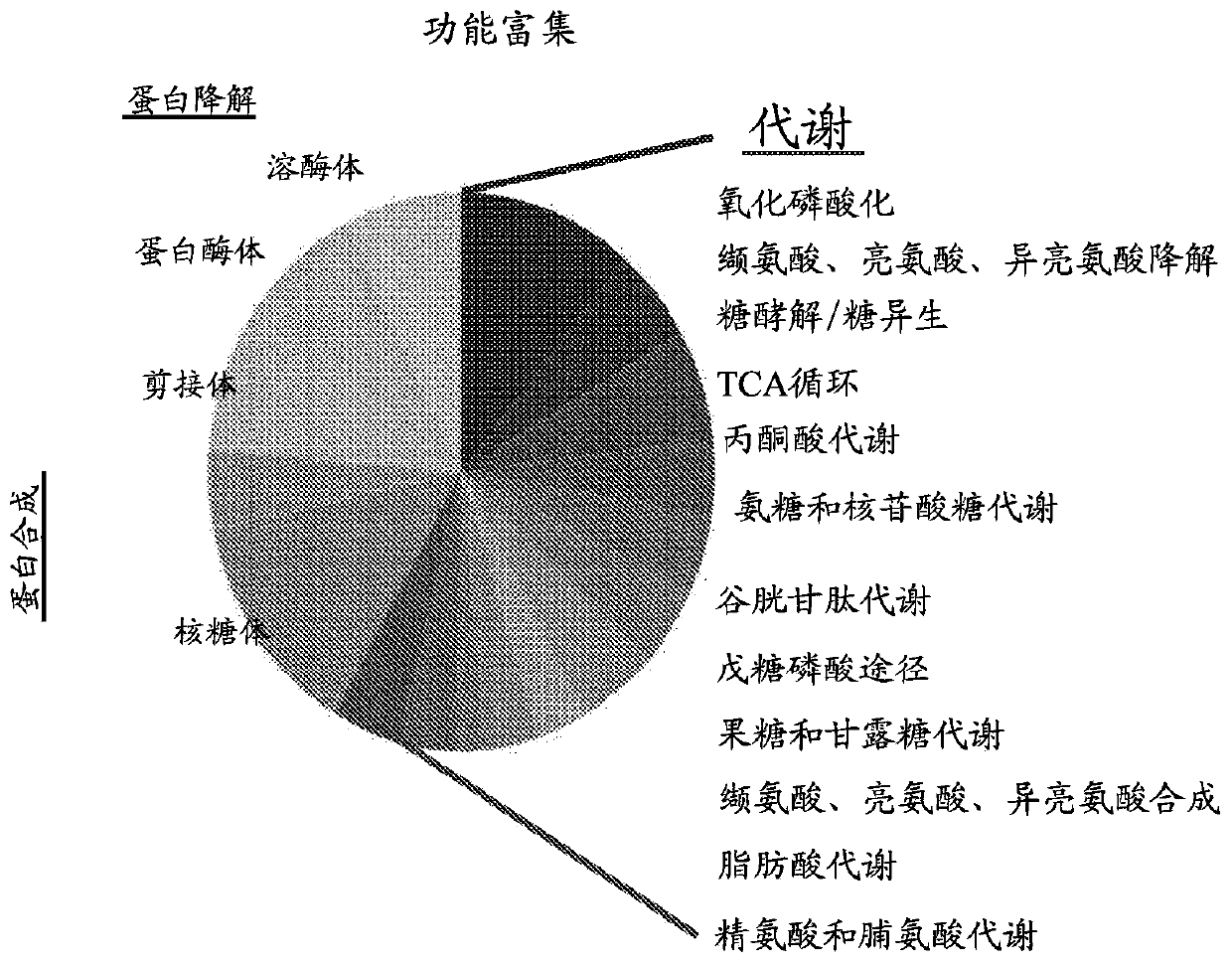Biomarkers for diagnosis of lung cancer
A biomarker and biological sample technology, applied in the field of markers to distinguish adenocarcinoma and squamous cell carcinoma, can solve the problem of complex malignant tumors
- Summary
- Abstract
- Description
- Claims
- Application Information
AI Technical Summary
Problems solved by technology
Method used
Image
Examples
Embodiment 1
[0249] Example 1: Mass Spectrometric Analysis of Protein Profiles from Healthy and Tumor Tissues from NSCLC Patients
[0250] To identify proteins showing altered expression levels in NSCLC tumor tissues relative to healthy tissues, 9 samples of cancerous and healthy tissues were collected from the same lungs of NSCLC patients and subjected to LC-HR MS / MS analysis. Hierarchical clustering based on the expression patterns of all detected proteins clearly allows the distinction between healthy and tumor tissues ( Figure 1A ), the expression levels of 1,494 proteins were altered (fold change (FC) ≥ |2| and false discovery rate (FDR) Figure 1B ). Up- and down-regulated proteins were further divided into two clusters based on the combination of FC and p-value, due to the "absence" of some proteins in some samples.
[0251] Next, functional analysis of differentially expressed proteins between cancerous and healthy lung tissue was performed using DAVID and the Gene Ontology data...
Embodiment 2
[0261] Example 2: Altered expression of metabolism-related and apoptosis-related proteins
[0262] Altered metabolism and the development of anti-apoptotic mechanisms are hallmarks of cancer. As previously described (WO2013 / 035095), several proteins associated with these features are overexpressed in certain types of cancer. Tumor and healthy tissue samples from the same lungs of NSCLC patients were analyzed by immunoblotting using specific antibodies to assess the levels of: voltage-dependent anion channel 1 (VDAC1), hexokinase I (HK-I), SMAC / Diablo (SMAC), apoptosis-inducing factor (AIF), mitochondrial antiviral signaling (MAVS), and Bcl-2 (Figure 2). Except for Bcl-2, all these proteins were significantly overexpressed (3-fold to 6-fold) in cancerous tissues compared to healthy tissues obtained from the same NSCLC patients ( Figure 2A , 2B ). LC-HR-MS / MS further confirmed that the expression levels of VDAC1, HK-I and SMAC were highly increased in cancer tissues ( ...
Embodiment 3
[0266] Example 3: Identification of biomarkers for lung cancer
[0267] LC-HR-MS / MS analysis data revealed many other proteins differentially expressed in NSCLC tumors (Table 6). The most significantly altered proteins expressed in tumors are presented in Table 6, together with their proposed functions and relationship to cancer. These include the Ras-related proteins Rab11B (Rab11B), HYOU1 (ORP150) and the heat shock protein HSPD1 (HSP60), the Ras-related protein Rab11B (Rab11B) is a member of the Ras superfamily of small GTP-binding proteins, HYOU1 (ORP150) in response to oxygen deprivation Plays a key role in the cellular mechanisms of cellular protection elicited. These findings were confirmed by immunoblot analysis, RNAseq UCSC XENA data, and qRT-PCR (Fig. 3).
[0268] Network analysis of the proteins identified here by proteomics (and determined by immunoblot analysis, RNAseq gene expression profiling data, and qRT-PCR) demonstrated that most of these proteins intera...
PUM
| Property | Measurement | Unit |
|---|---|---|
| length | aaaaa | aaaaa |
| particle diameter | aaaaa | aaaaa |
| length | aaaaa | aaaaa |
Abstract
Description
Claims
Application Information
 Login to View More
Login to View More - R&D
- Intellectual Property
- Life Sciences
- Materials
- Tech Scout
- Unparalleled Data Quality
- Higher Quality Content
- 60% Fewer Hallucinations
Browse by: Latest US Patents, China's latest patents, Technical Efficacy Thesaurus, Application Domain, Technology Topic, Popular Technical Reports.
© 2025 PatSnap. All rights reserved.Legal|Privacy policy|Modern Slavery Act Transparency Statement|Sitemap|About US| Contact US: help@patsnap.com



